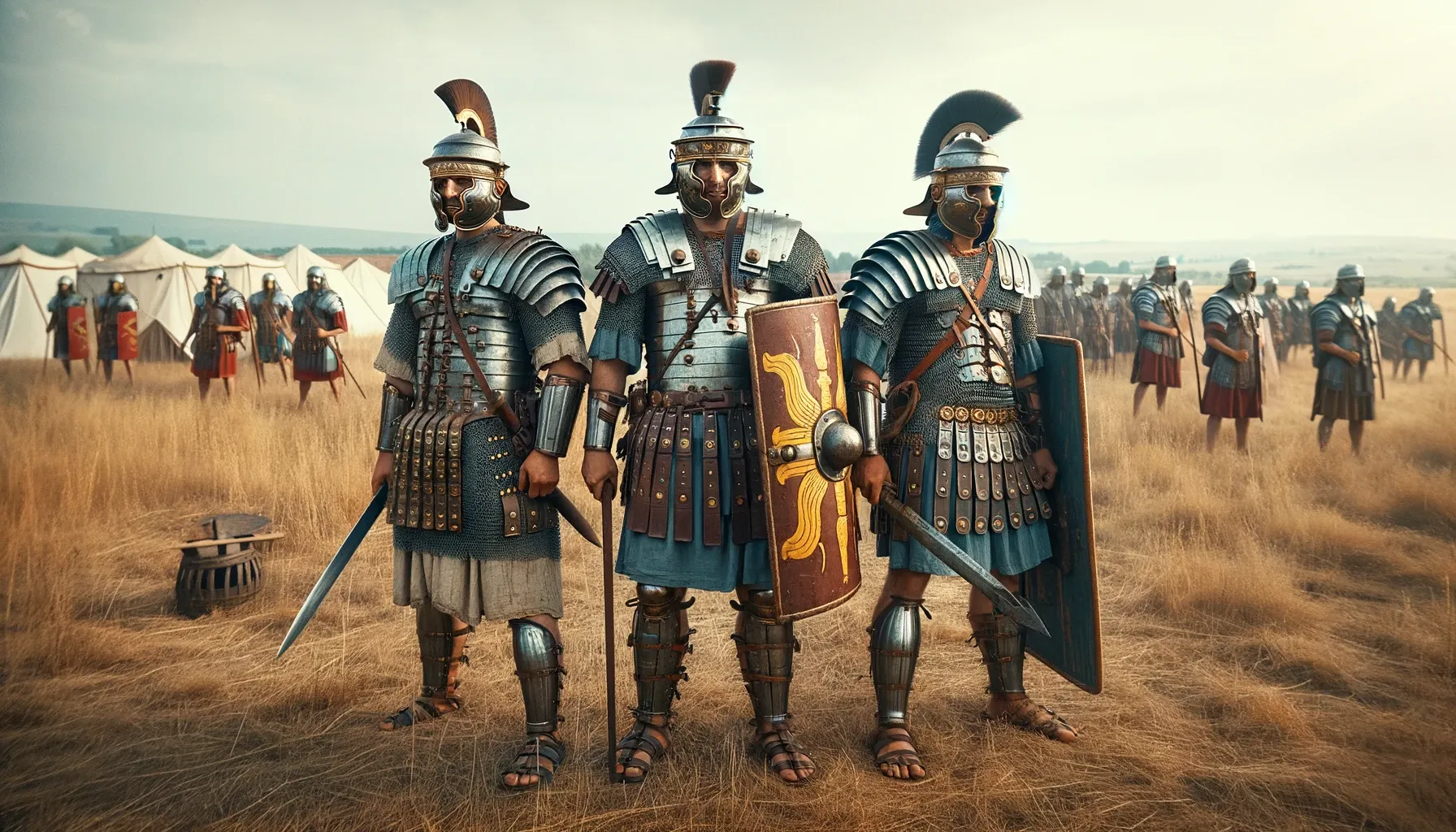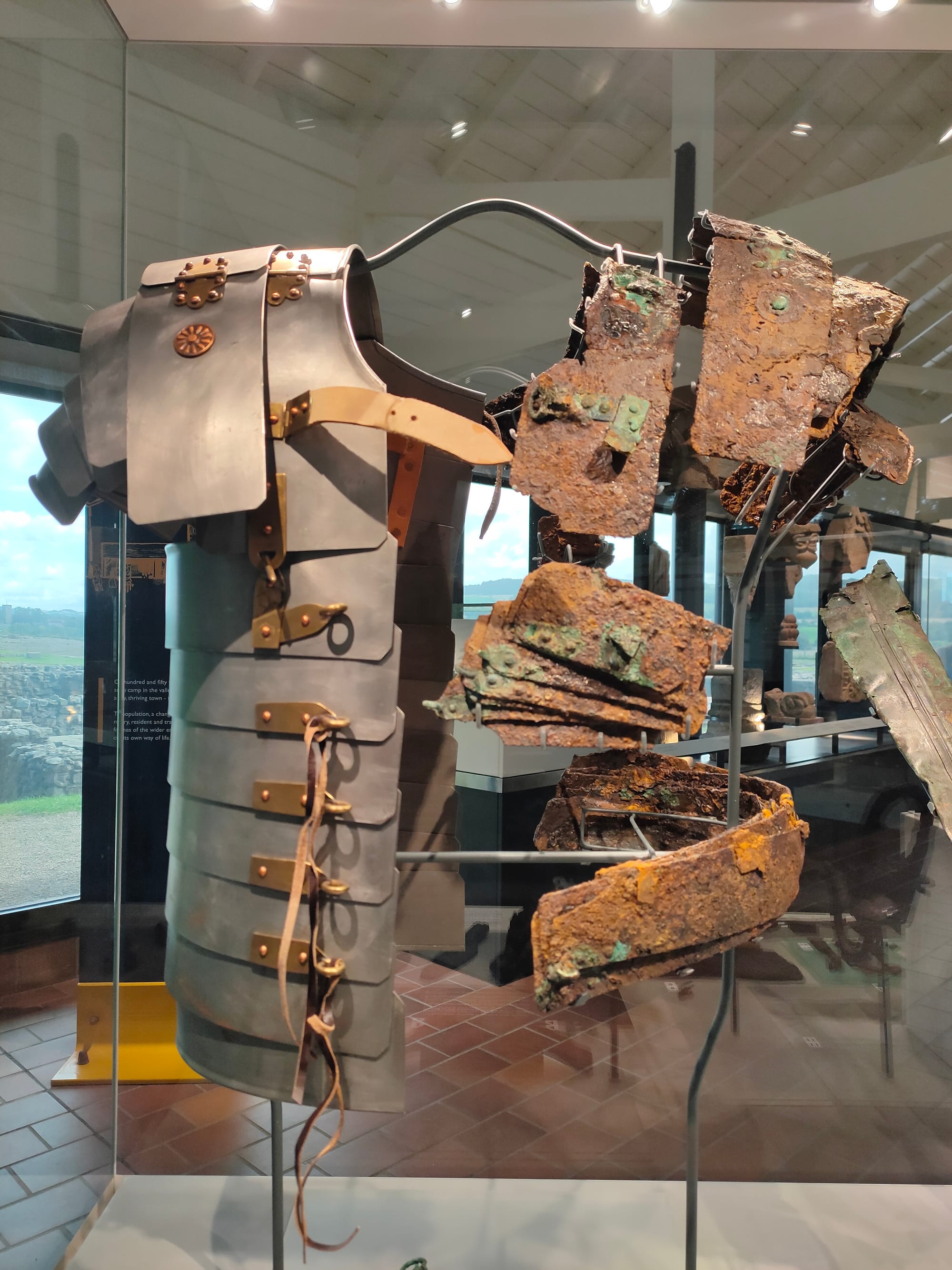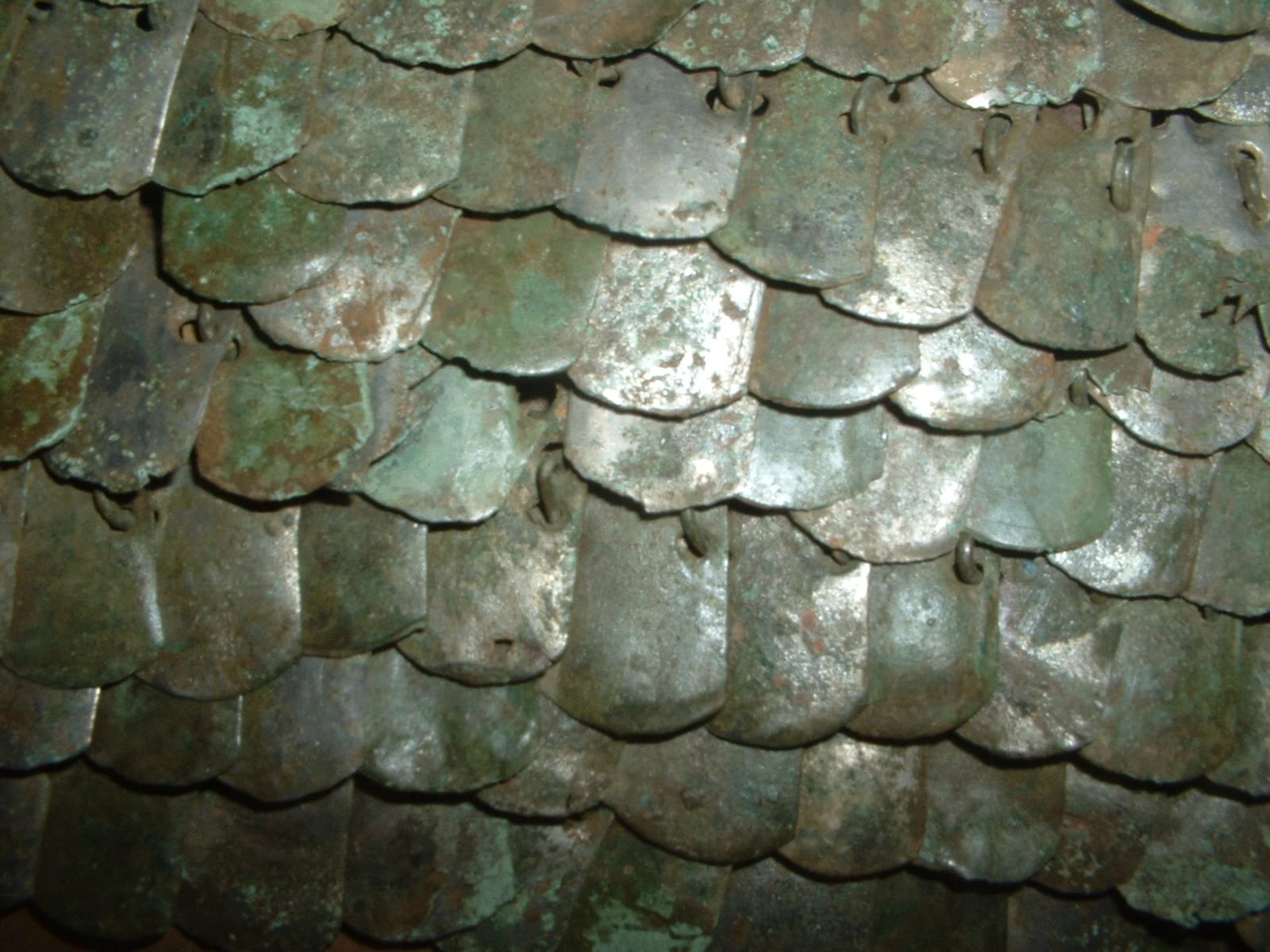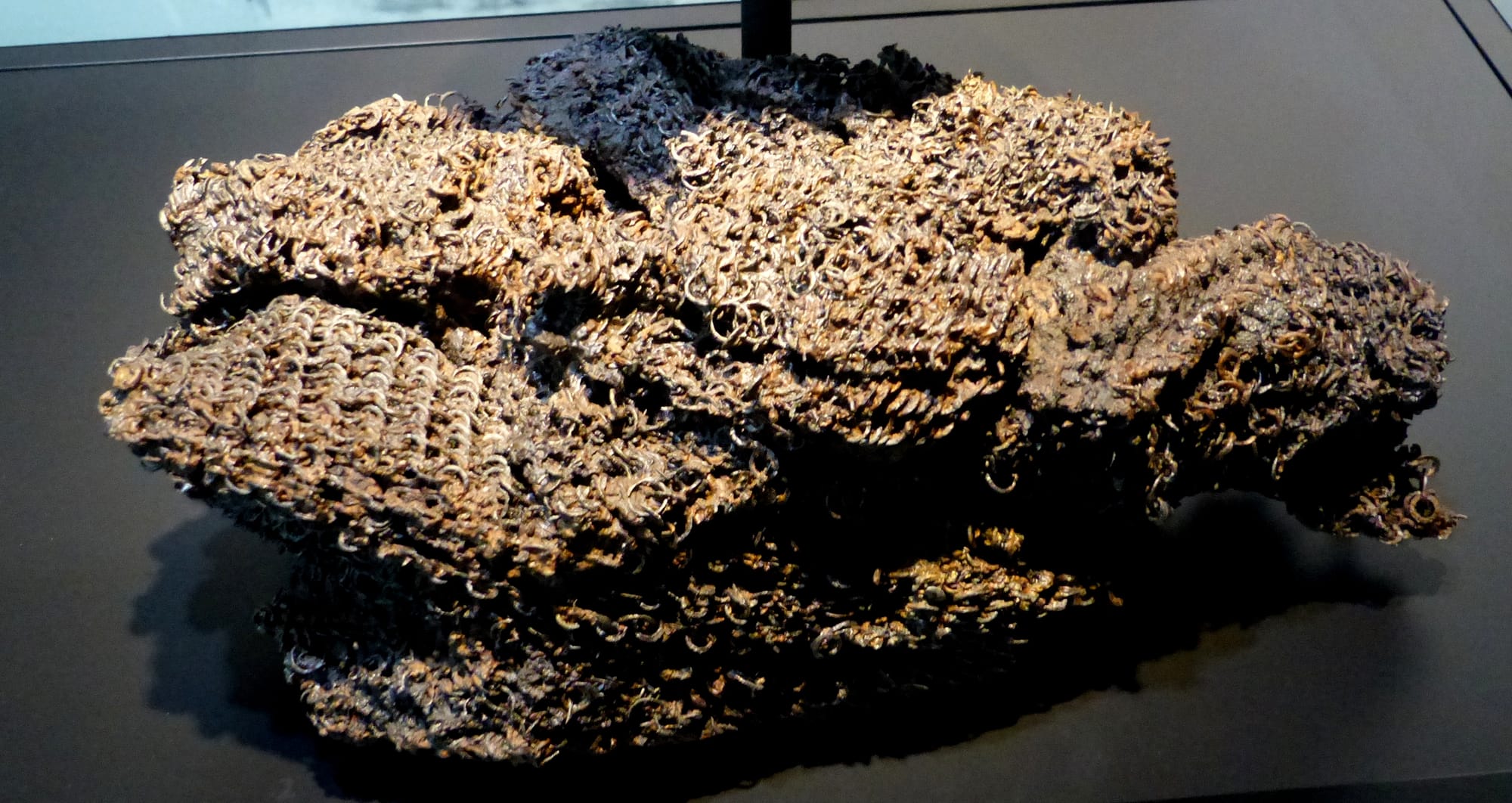The Armor of Rome: Protecting the Empire's Legions
Roman military gear, standardized in production and use, was crucial for their military success.

The Roman Empire's military might was not just due to its disciplined legions and tactical prowess but also to its advanced personal armor. Roman military gear, standardized in production and use, was crucial for their military success, known as res militaris or disciplina.
However, not all Roman soldiers had superior equipment compared to their wealthier foes. The need for large-scale "mass production" following the "Marian Reforms" may have led to a drop in quality. For instance, during civil wars, the demand for equipping large armies compromised helmet quality, sometimes necessitating additional wicker protection, reflecting in some poorly made, mass-produced items found, for example, in Cremona from AD 69.
The manufacture of helmets following the Italic tradition experienced a decline in quality due to the pressures of outfitting large armies, particularly during periods of civil unrest. Historical sources indicate that these helmets often exhibited subpar craftsmanship, with accounts mentioning instances where they were shielded with wicker coverings, such as those used by Pompeius' troops besieging Dyrrachium in 48 BC. These makeshift protections proved ineffective against the projectiles launched by Caesar's slingers and archers, resulting in significant damage.
It appears that the quality of armor suffered during times when mass production techniques were employed to meet the overwhelming demand, which surged notably during the Civil and Social Wars, as well as following the reforms initiated by Marian and Augustan. The adoption of smaller cuirasses likely facilitated quicker and cheaper production, which could have been a critical consideration during financial crises or situations necessitating the rapid mobilization of large forces. This trend is perhaps evident in the discovery of poorly crafted, mass-produced iron helmets of Imperial Italic type C, such as those unearthed in the River Po at Cremona, linked to the Civil Wars of AD 69.
Lorica Segmentata: The Icon of Roman Might
The lorica segmentata, recognized by its distinct bands of iron plates, offered exceptional protection and flexibility. Predominantly used from the early Empire into the 4th century, its intricate design catered to the heavy infantry's needs, symbolizing the Roman legionnaire's image.
In Latin, the name lorica segmentata translates to "segmented cuirass”.
The lorica segmentata, also called lorica lamminata and known as segmented or banded armor, comprised metal strips arranged into circular bands and secured with internal leather straps. This type of armor has become emblematic of the Roman legions in modern portrayals and popular culture.

Lorica Squamata: The Scales of Defense
Older than the segmentata, the lorica squamata comprised hundreds of small metal scales attached to a fabric base, resembling the skin of a fish. This scale armor provided a balance between flexibility and protection, worn by various troops across the Republic and Empire periods.
The small individual pieces of scale armor, known as squamae, were crafted from iron or brass, with some occasionally coated in white metal for tinning. Each piece featured a 90-degree bend and a central ridge. These scales were assembled into horizontal rows and then attached to a backing, which in rare cases could be chain mail (lorica hamata), offering dual layers of defense but at a higher weight and cost. The chain mail beneath the scales consisted of interlocking rings, either closed through riveting or made from solid rings punched from metal sheets. The armor likely had an opening at the back or side, fastened with ties for ease of wearing. Despite some claims of vulnerability to upward strikes, the overlapping design of the scales provided effective protection due to their layered arrangement.

Lorica Hamata: The Chainmail Legacy
The lorica hamata, a chainmail armor made of interlocked rings, was a testament to Roman engineering. Utilized from the Republic's days to the fall of the Empire, it offered durable protection across chest, back, and shoulders of soldiers. The three parts were connected by leather straps. The design was so effective that it continued to be used through the Middle Ages.
Crafting a single shirt composed of 30,000 rings might span several months to complete. Despite the lengthy production time, these shirts could endure for many years, eventually serving as a substitute for the pricier lorica segmentata towards the Empire's decline. The rings, designed in a mix of styles, featured a punched washer connected to a riveted metal wire ring, each measuring 7 mm across the outer edge. Added defense was provided by shoulder flaps.

Armor and equipment for the legs, arms, head, and shields included various items:
Manica: A thin metal plate armguard worn by some Roman soldiers for arm protection.
Greave: Thin metal sheet leg protectors, adopted in the later Roman period for leg defense.
Scutum: A large shield with a wooden core and metal reinforcements, extensively utilized in Rome for its effectiveness in offensive and defensive formations.
Parma: A round shield about 3 feet in diameter with a metal-reinforced center, preferred by the light infantry.
Cetra: A smaller shield crafted from wood and leather, infrequently used by the Romans.
Galea: Helmets whose designs evolved throughout Roman history, often featuring a crest or peak.
Tunic: A woolen undergarment worn beneath armor by soldiers.
Focale: A scarf designed to shield the neck and shoulders from armor chafing.
Braccae: Woolen pants worn by both light and heavy infantry units.
Balteus: A belt specifically for carrying a Roman sword.
Sagum and Paenula: Two styles of cloaks; the sagum was a wool cloak treated to repel water, and the paenula featured a hood, suitable for cold weather.
Pteruges: A leather strip skirt for protecting the upper legs.
Caligae: Military boots made of leather, occasionally reinforced with metal.
Sarcina: A standard-issue military pack carrying essentials like a leather bag, food, a water skin, cooking tools, stakes for tents, and a small shovel for digging.









About the Roman Empire Times
See all the latest news for the Roman Empire, ancient Roman historical facts, anecdotes from Roman Times and stories from the Empire at romanempiretimes.com. Contact our newsroom to report an update or send your story, photos and videos. Follow RET on Google News, Flipboard and subscribe here to our daily email.
Follow the Roman Empire Times on social media: